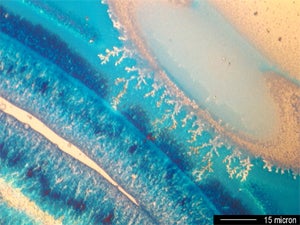|
|

The Center for Applied Nanoionics has a particularly intriguing area of nanoionics at its core – mass transport in solid electrolytes at the nanoscale. This involves fundamental materials research as well as the development of new devices and systems based on nanoionic principles.
We cannot consider nanoionics without introducing the basic principles of electrochemistry. As the name suggests, electrochemistry deals with the relationship between electricity and chemical change. In many respects, batteries are the prime example of the application of electrochemical principles; the movement of ions and the change in their oxidation state within the battery is used to release electrical energy over time. However, since ions not only carry charge but also have significant mass, we can look at ion transport as a means to move material in a controlled manner. An atom that becomes oxidized (has one or more electrons removed) at one location can be moved through an electrolyte by an electric field. On receiving an electron at another location, the displaced ion is reduced and becomes an atom. In this situation, the net change in the system is the redistribution of mass – material is removed from one location and deposited at another using energy from an external power source.
The world of electronics has benefited from such “deposition electrochemistry” for many decades. Electroplating, in which metal ions in a liquid solution are reduced to create a uniform metal film, is used in printed circuit boards and packages, and in the processes used to make copper interconnect within integrated circuits. In such cases, the dimensions involved are typically quite large – electrode spacing can be in the order of many millimeters.
The term nanoionics is applied when electrochemical effects occur in materials and devices with interfaces, e.g., electrodes or electrochemically different material phases, that are closely-spaced (typically a few tens of nm or less). In this size regime, the functionality of ionic systems is quite different from the macro-scale versions but in a highly useful manner. For example, internal electric fields and ion mobilities are relatively high in nanoionic structures and this, combined with the short length scales, result in very fast response times. In addition, whereas deposition electrochemistry and most batteries use liquids or gels as ion transport media, nanoionics can take advantage of the fact that a variety of solid materials are excellent electrolytes, especially at the nanoscale.
This allows nanoionic devices based on solid electrolytes to be more readily fabricated using techniques common to the integrated circuit industry and facilitates the marriage of such devices with mainstream integrated electronics. Indeed, in-situ changes may be controlled by the integrated electronics, leading to electronic-ionic system-on-chip (SoC) hybrids. |
|